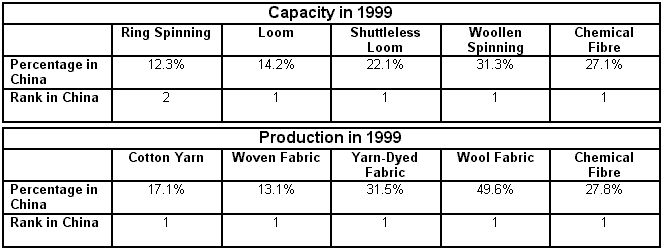
|
ISSUE N° 6 April, 2001 |
||||||
|
1. Delta Region Changes its Administrative Map Along with the rapid economic development, China is
speeding up the process of urbanisation. In addition to the Pear River Delta, the Yangtse River Delta Region is one of the most urbanised areas in China.
The number of "Zhen" (township) in the province was reduced from 1 006 in 1998 to 955 at the moment, and the number of
"Xiang" in the rural area (at the same administrative level with
"Zhen") reduced from 823 to 740. * The word "city" in China is a very confusing concept, not only for foreigner, but also for many Chinese citizen. Every city in China, just like every cadre, has a special rank. The cities are classified into four ranks: the rank on the provincial level (like Shanghai and Beijing), the rank on the quasi-provincial level (like Nanjing and Ningbo), the rank on the prefecture level (like Suzhou and Wuxi) and the rank on the county level (Kunshan and Xishan). So, it is very important to differentiate the ranks of the cities, while meeting a Chinese delegation with one or more Mayors. 2. Macro-economic Development in the First Quarter 2001 The first quarter of this year showed that the economy of the Yangtse-Delta Region is growing faster than China's average. So, the Delta region continues to play the locomotive role of China's Economy. See the table below: Comparative Economic Development
3. Capital from Other Provinces Poured into Shanghai Encouraged by the prosperous prospect of Shanghai - the famous Metropolis in the Far East Asia, more and more businessmen come to the city and bring with them heavy venture capital. Among them, there are not only international businessmen, but also Chinese people from other provinces. According to a local newspaper (Xinhua Daily, March 4th, 2001), 9.6 billion RMB (ca. 1.16 billion USD, as registered capital) was poured into Shanghai last year - an increase of 165 % compared to 1999. The figure did not include 1.8 billion of smaller sharing investment in large projects in Shanghai. Among the total of 9.6 billion RMB, there were 5 big projects with a registered capital of more than 100 million RMB (ca. 12 million USD). The greater part of the investment was private. 4. Jiangsu Province: No.1 in China's Textile Industry Jiangsu, one of the economically strongest provinces in China, holds a leading position also in China' s textile industry. The total sales of the textile industry of the province reached approximately 22% of China. According to statistics of the Customs of China, the province exported 5.36 billion USD textile and garment products (excluding silk) in 1999, which is 13.2% of the total national textile and garment exports and 29.6% of the whole export of the province. The following tables show more details.
5. Telephone Numbers in Zhejiang will be Changed From May 18th, 2001 on, telephone numbers in Hangzhou, Ningbo and Wenzhou will be Changed, namely from 7 digits into 8 digits.
Businessmen and tourists having relations with Zhejiang shall pay attention to this new development. 11.5.2001 Consulate General of Switzerland |
Back to the top of the page
Page created and hosted by SinOptic
![]()

